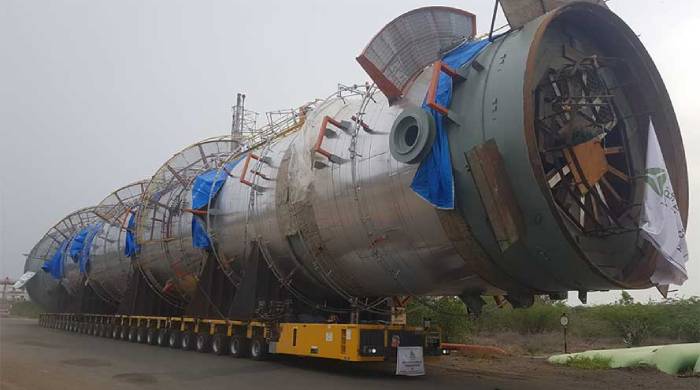
Reducing costs in logistics services is essential for companies in India looking to enhance their bottom line. Start by optimizing supply chain management to streamline processes and reduce delays. Leveraging technology, like logistics management software and automation, can also boost efficiency. It’s wise to negotiate with suppliers for better rates and consolidate shipments when possible. Improving transportation efficiency through smarter route planning can save both time and money. Moreover, warehousing practices should be re-evaluated for cost reduction. Outsourcing logistics may lighten the load on internal resources as well. Lastly, fostering a culture of cost-saving practices among employees can lead to long-term financial benefits.
1. Optimize Supply Chain Management
To effectively reduce costs in logistics, optimizing supply chain management is crucial. Start by implementing a robust system that streamlines processes and minimizes delays. For example, utilizing demand forecasting tools can help businesses maintain optimal inventory levels, preventing the issues of overstocking or stockouts. Logistic services in India not only save money on storage but also ensures that products are available when customers need them, enhancing customer satisfaction. Additionally, regularly reviewing and refining supply chain processes can uncover inefficiencies that, when addressed, lead to significant cost reductions.

2. Leverage Technology for Logistics
Leveraging technology in logistics can significantly cut costs and enhance efficiency. By adopting logistics management software, companies can gain better visibility into their supply chain, allowing for real-time tracking of shipments. This helps in identifying delays and optimizing routes to avoid extra expenses. For instance, companies can use automated systems for inventory management, which reduces human error and ensures that stock levels are accurately maintained, preventing costly overstocking or stockouts.
Artificial intelligence (AI) also plays a crucial role in streamlining operations. AI can analyze data to predict demand patterns, enabling businesses to adjust their inventory levels accordingly. For example, a company might find that certain products sell better during specific seasons, allowing them to stock up in advance and reduce the risk of excess inventory.
Furthermore, using automation in warehousing processes can lead to faster order fulfillment and reduced labor costs. Technologies like robotics for picking and packing can increase efficiency and lower the likelihood of mistakes. By investing in these technological tools, logistics operations can become more agile, responsive, and ultimately cost-effective.
3. Negotiate with Suppliers and Partners
Negotiating with suppliers and logistics partners can significantly lower your costs. Establishing strong relationships is crucial; when providers value your business, they are often willing to offer better rates. For instance, if you consistently ship large volumes, you can leverage that to negotiate bulk discounts. Consider consolidating your shipments by using fewer carriers. This not only simplifies your logistics but also allows you to take advantage of reduced shipping rates that come with bulk agreements. Additionally, maintaining open communication about your needs and challenges can lead to tailored solutions that benefit both parties.
4. Improve Transportation Efficiency
Improving transportation efficiency is a key strategy for reducing logistics costs in India. One effective method is optimizing delivery routes using GPS tracking and route planning software. This technology can help identify the shortest paths, which not only saves fuel but also decreases travel time. For instance, a logistics company might find that adjusting their routes to avoid congested areas can lead to significant savings over time.
Additionally, companies can benefit from utilizing multiple transport modes. For example, combining rail and road transport can often be more cost-effective than relying solely on trucks. This multi-modal approach allows businesses to take advantage of lower shipping rates and faster delivery options, depending on the nature of the goods being transported. Overall, focusing on these strategies can lead to better transportation practices, ultimately contributing to reduced logistics costs.
- Optimize route planning for cost savings
- Utilize real-time tracking systems to monitor shipments
- Consolidate shipments to reduce trips
- Implement fuel-efficient practices to lower expenses
- Explore multi-modal transportation options
- Schedule regular maintenance to prevent delays
- Train staff on best practices for efficient driving
5. Efficient Warehouse Management
Efficient warehouse management is crucial for reducing logistics costs in India. A well-organized warehouse layout can significantly cut down on handling time and operational expenses. For instance, placing frequently picked items closer to the shipping area minimizes movement and speeds up order fulfillment. Additionally, implementing an inventory management system helps track stock levels accurately, reducing the risk of overstocking or understocking, which can lead to unnecessary costs. Emphasizing real-time data can enhance decision-making and ensure that inventory is aligned with actual demand. Moreover, using automation tools, like barcode scanners and automated storage systems, can streamline processes, reduce errors, and improve overall efficiency. By focusing on these elements, businesses can create a more responsive and cost-effective warehousing operation.
6. Outsource Logistics to Save Costs
Outsourcing logistics can be a game-changer for businesses looking to cut costs. By partnering with third-party logistics (3PL) providers, companies can offload the complexities of transportation, warehousing, and distribution. This lets them focus on their core operations while still benefiting from expert logistics management. For instance, a small manufacturer might find that hiring a 3PL not only reduces their shipping expenses but also improves delivery times by utilizing the provider’s established networks and resources.
Additionally, outsourcing allows businesses to scale their logistics needs in line with demand. During peak seasons, a company can leverage a 3PL’s capacity without the burden of maintaining its own fleet or warehouse space. This flexibility can lead to significant savings, especially for companies that experience fluctuating order volumes.
However, it’s essential to evaluate the cost-benefit ratio when considering outsourcing. Businesses should analyze the potential savings against the costs of outsourcing to ensure it aligns with their financial goals. By carefully selecting a logistics partner that understands the local market and has a proven track record, companies can not only save money but also enhance their overall efficiency.
7. Implement Lean Logistics Practices
Implementing lean logistics practices can significantly enhance operational efficiency and reduce costs. Lean logistics focuses on minimizing waste in every aspect of the logistics process. This involves analyzing each step in the supply chain to identify and eliminate unnecessary costs, delays, and resource use. For example, a company might find that certain packaging materials are excessive and switch to lighter, more efficient options.
Another key aspect is fostering a culture of continuous improvement. Regularly reviewing processes and encouraging feedback from employees can lead to innovative solutions that streamline operations. For instance, a logistics team could implement a system to track delivery times and identify bottlenecks, allowing the company to make data-driven decisions for improvements. By adopting lean practices, companies in India can not only cut costs but also respond more swiftly to market changes, ultimately enhancing customer satisfaction.
8. Monitor and Analyze Performance
Monitoring and analyzing performance is crucial for reducing logistics costs. By establishing key performance indicators (KPIs), businesses can gain insights into various aspects of their logistics operations. For instance, tracking delivery times, order accuracy, and transportation costs can help identify inefficiencies. Regular audits of these metrics can reveal patterns and areas where costs can be trimmed. An example would be a company noticing an increase in shipping delays during peak seasons. By analyzing these patterns, they can adjust their logistics strategies, perhaps by increasing inventory ahead of time or optimizing shipment schedules to better meet demand. This proactive approach allows businesses to stay agile and responsive, ultimately leading to enhanced efficiency and cost savings.
9. Incorporate Sustainability Initiatives
Incorporating sustainability initiatives can be a game changer for logistics services in India. By adopting green logistics practices, companies can not only reduce their carbon footprint but also lower operational costs. For instance, using energy-efficient vehicles can lead to significant fuel savings over time. Additionally, businesses can explore eco-friendly packaging solutions, such as biodegradable materials or reusable containers, which can help reduce shipping weight and ultimately lower shipping costs. Companies like Flipkart have already started using electric vehicles for last-mile delivery, demonstrating that sustainability can align with cost efficiency. Implementing these initiatives not only enhances brand reputation but also appeals to a growing segment of environmentally conscious consumers.
10. Focus on Employee Training and Development
Investing in employee training and development is essential for optimizing logistics operations. When employees are well-trained in logistics best practices, they can work more efficiently and make better decisions that save costs. For example, training on the latest logistics technologies can help your team leverage tools that enhance tracking and inventory management. Furthermore, fostering a culture of cost-saving initiatives empowers employees to identify wasteful practices and suggest improvements. Regular workshops or training sessions can keep the team updated on industry trends and operational standards, ultimately leading to reduced errors, improved service levels, and lower operational costs. When staff feel competent and valued, their motivation increases, which can positively affect overall productivity.
Frequently Asked Questions
1. What are logistic services, and how can they help businesses save money in India?
Logistic services manage the flow of goods, including transportation and warehousing. They can help businesses save money by optimizing routes, reducing delivery times, and lowering storage costs.
2. How does choosing the right logistic partner affect cost savings?
A good logistic partner can streamline your supply chain, negotiate better shipping rates, and improve efficiency. This helps reduce overall costs and can make your business more competitive.
3. What role does technology play in reducing logistics costs in India?
Technology like tracking systems and inventory management software helps reduce inefficiencies. It allows businesses to monitor shipments in real-time and manage resources better, leading to cost savings.
4. Can using a third-party logistics provider be beneficial for small businesses?
Yes, third-party logistics providers can be very beneficial for small businesses. They allow access to professional services and a broader network without the need for a large investment in infrastructure.
5. What strategies can companies implement to further minimize logistics expenses?
Companies can implement strategies such as route optimization, bulk shipping, and lean inventory management to minimize logistics expenses and enhance operational efficiency.
TL;DR This blog outlines ten strategies for reducing logistics costs in India, including optimizing supply chain management, leveraging technology, negotiating with suppliers, improving transportation efficiency, and managing warehouses effectively. It emphasizes outsourcing logistics, implementing lean practices, monitoring performance, incorporating sustainability initiatives, and investing in employee training. By applying these methods, companies can achieve greater profitability and efficiency.